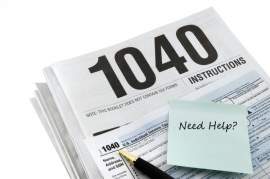
Understanding the Importance of IRS Forms

Individuals:
IRS FORM 1040
The individual taxpayer accounts for over 50% of the federal revenue received from taxation. The starting point in terms of filing taxes for the individual is form 1040. The 1040 is the necessary IRSform which documents an individual's income tax. The 1040 contains 2 pages and eleven attachments or schedules.
The crucial IRS form was first introduced in 1913, and allows an individual to calculate allowable deductions, credits, taxes owed, and implements previously held wages during taxation of pay periods. Filling the 1040 varies in complexity depending on the individuals income, investments, assets, or previous tax history. The eleven attachments associated with the 1040 include all necessary information for the individual tax payer. Given recent technological innovations the 1040 can now be filed online.
Businesses:
FORM 1120S S-Corporation Income Tax Return
FORM 1120 Corporation Income Tax Return
Similar to individuals, profit-based businesses of all sizes are subjected to federal taxation. The IRS has divided American businesses into five different categories:sole proprietorship, partnerships, corporations, S corporations (pass federal tax responsibilities to shareholders), and limited liability companies.
Each category is subjected to the four different taxes displaced on businesses:income tax, Self-Employment tax, Employment taxes, and Excise taxes. The varying forms of business all require different tax forms. Variation also exists in how each business is taxed, some businesses are forced to pay all forms of taxation while others only have a handful of the above-listed levies applied to them. If a business fails to file the appropriate forms, or fails to pay the applied taxes the IRS will proceed with a collection enforcement.
Charities:
FORM 1023
Individuals or businesses who donate contributions to charities will be awarded by the IRS with a tax write off or deduction. The contribution is only deductible however, if the pledge is fulfilled and the donation is made to a recognized tax-exempt organization.
The IRS enforces strict rules on deductions based on the amount donated, the charity's function, and the contribution of non-cash assets. All charities other than religious groups and small foundations (under $5,000 annually) are over sought by the Internal Revenue Service. Charities that obtain over $25,000 in annual contributions must supply the IRS with documents for information purposes. Under federal law, charities are exempt from paying the national income tax.
Under the IRS form 501(c)(3) the government has created two basic requirements for a charity to be considered exempt from taxation-the organization in question must be created for a purpose that Congress recognizes as charitable and their ensuing actions must directly benefit others. Tax-exempt charities are only required to pay excise taxes, such as levies associated with transportation costs or unrelated business expenses.
Government Entities:
The reach of the IRS extends to government entities mainly for information gathering purposes. Although individuals who work for government agencies are taxed, the entities themselves are exempt from the majority of federal levies. The primary IRS form associated with government entities is the 990, entitled "Return of Organization Exempt from Income Tax." Fullfillment of the 990 is necessary for all government agencies.
The 990 is not a taxable document, but instead, a form necessary for the exchange of information between the Internal Revenue Service and government agencies exempt from taxation. Mandatory filing requirements were instituted to limit possible situations of corruption and abuse among agencies free from federal taxation.
Similar to individuals, the filing requirements vary in regards to complexity based on the entities size and financial impact. The 990 provides the IRS with public information that otherwise would not be made transparent. The information-gathering form documents salaries, executive maneuvers, investments, and other significant disclosures.
Individual IRS Forms
FORM 1040 Individual Income Tax Return
FORM 1040A Individual Income Tax Return
FORM 1040EZ Income Tax Return for Single and Joint Filers with No Dependents
IRS forms are filled out by individual taxpayers, businesses, government entities, and charities to report income and calculate taxes owed to the federal government. The IRS forms are the necessary documents used by the Internal Revenue Service to levy federal taxes.
Each of the above listed groups of taxpayers requires completion of varying forms. The alternate forms exist to organize the levying process; all types of landowners, employees, enterprises, and organizations must pay taxes to the federal government to fund public projects and pay off the national debt. For instance the 1040, is the necessary starting point and most well-known IRS form for the individual taxpayer.
The Form 1040 is the IRS form that documents an individuals Federal income tax return. The form 1040 was first published for use in 1913, 1914, and 1915 to raise revenue for the United States federal government. After successfully generating sufficient funding through the levying of the personal income tax, the form 1040 became an annual staple in 1916.
Depending on the individuals situation and complexity there are various forms of the form 1040. For example, individuals who do not invest in the stock market (no capital gain or loss) or incur zero itemized deductions, can use a simplified IRS form known as the Form 1040A (short form) or the Form 1040EZ (easy form.)
Income tax returns and other IRS forms for the individual taxpayer are due by April 15th of the subsequent fiscal year. Excluding attachments or add-ons, the standardized Form 1040 consists of two full pages. The first page of the IRS form requires information about the individual tax payer, his/her dependents, adjustments to income, and income items. The second page is used to calculate allowable deductions, credits, tax owed given the income, and implements funds previously withheld from wages or payments made towards a tax debt.
The form 1040 contains 11 attachments, known as schedules, which vary in necessity based on the taxpayer's situation. Listed below are the IRS forms attached to the Form 1040, their purpose, and the specific tax levied.
Schedule A
- IRS form Used to itemize allowable deductions made against income. Itemized deductions are eligible expenses that taxpayers report on their IRS forms to decrease their taxable income. After computing the adjusted gross income, taxpayers will review a lost of allowable deductions, appropriately itemize them, and then subtract the itemized deductions from their AGI amount. Once the calculations have been made the individuals taxable income amount is finalized.
Examples of allowable itemized deductions include:Medical expenses that exceed 7.5% of the taxpayer's adjusted gross income, premiums for medical insurance, necessary travel expenses, payments for prescription drugs, charitable contributions, state property taxes (property and income), and investment interest. To save time and dependent on situation, taxpayers may choose to take a standard deduction, which is between, $5,150 and $14,300.
Schedule B
- IRS form that calculates interest or divided income. Schedule B is required only if the amount received from dividends or interest exceed $1,500 during the tax year. Dividends refer to corporate profits "kicked-back" quarterly to investors of corporations.
Schedule C
- IRS form that lists all income and expenses related to self-employment. Depending on ease of situation, a streamlined form (C-EZ) is available for sole proprietors.
Schedule C-EZ- IRS form
Schedule D - IRS form Used to file capital gains and losses incurred during the taxable year. Schedule D is used to calculate the taxable amount given the special rates applied to capital gains. Capital gains are profits which result from investments into an asset, such as real estate, stocks, bonds, or mutual funds.
Schedule E - IRS form Used to report income and expenses emerging from the rental of royalties or real property. Pass-through entities (partnerships, trusts, estates) are also reported on this IRS form.
Schedule EIC - IRS form which documents an individuals Earned Income Tax Credit. Designed to encourage low-income workers and offset the levying burden of payroll taxes, the EIC offers tax credits to individuals who receive a low annual income while disabled, raising a family, furthering an education, or, sharing a residence.
Schedule F - IRS form used to report expenses and income related to farming.
Schedule H - IRS form Used to document taxes owed to due employment of household aid.
Schedule J - IRS form that calculates average farm income over a period of several years.
Schedule L : IRS form, Used to figure an increased standard deduction in certain cases.
Schedule M - IRS form applied in 2009 and 2010, used to claim the $400 "Making Work pay" tax credit.
Schedule N - IRS form
Schedule R - IRS form Used to calculate tax credits for the elderly or disabled.
Schedule SE : IRS form, Used to calculate the self-employment tax owed on income from self-employment (such as on a Schedule C or Schedule F, or in a partnership).
NEXT: IRS Refund





















